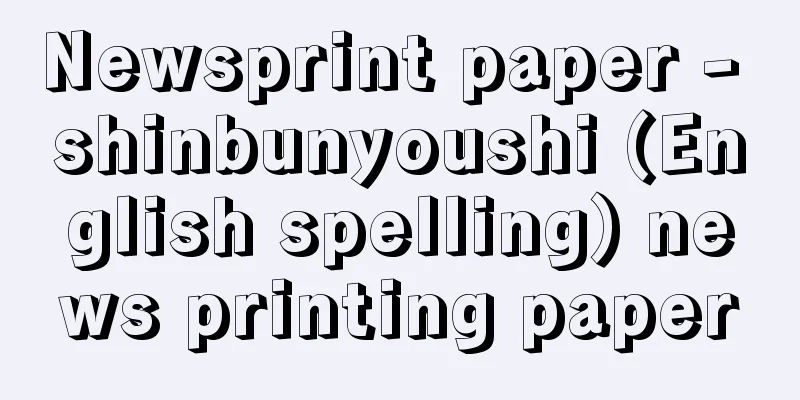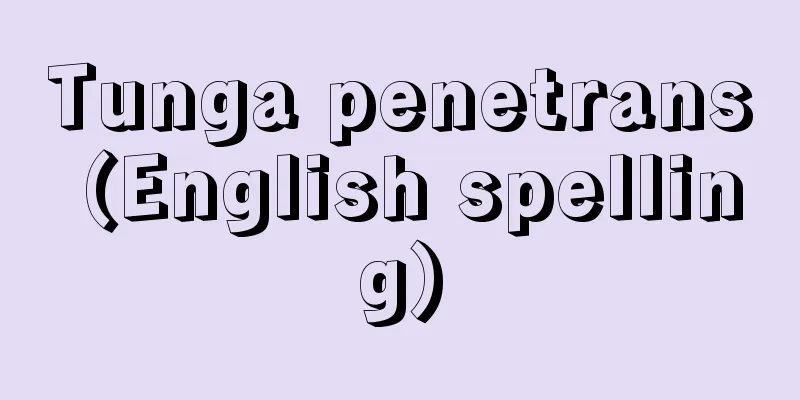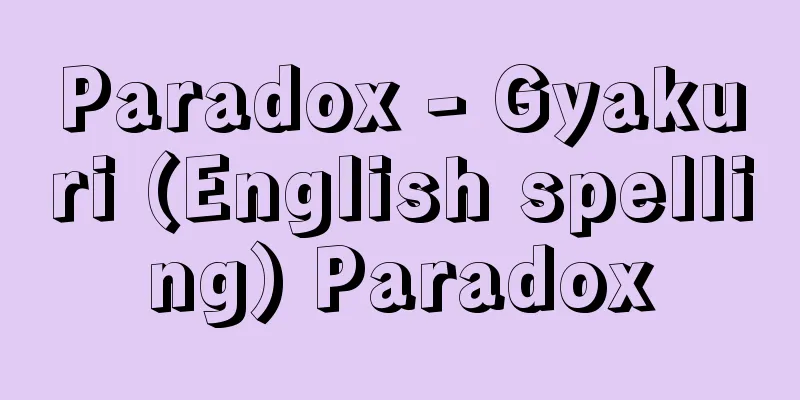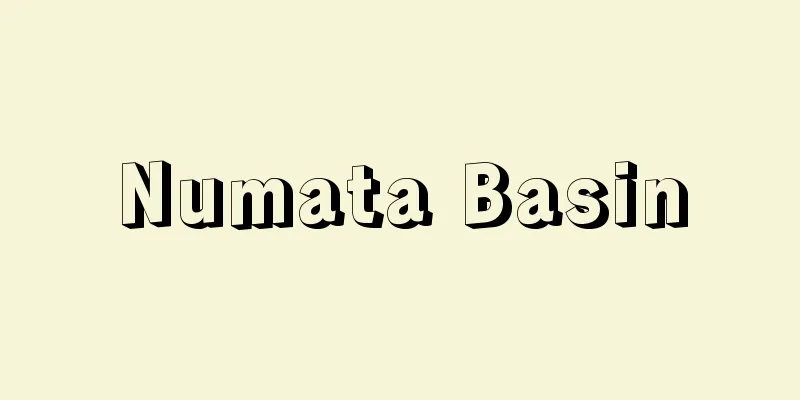Newsprint paper - shinbunyoushi (English spelling) news printing paper

|
Paper made to be inexpensive and have properties suitable for newspaper printing. As a printing paper, it is almost as good as sawdust (printing paper D), but because its use is somewhat special, it is desirable for it to have the following typical properties: (1) It does not have to be able to be stored for a long time, but it can be supplied at low cost. (2) It must be opaque enough to withstand double-sided printing, with minimal difference between the front and back, free of impurities, and as white as possible. (3) It is a roll paper suitable for continuous high-speed printing, and has various strengths such as tensile strength and tear strength, absorbs ink quickly, and has a smooth surface. (4) It is lightweight (small volume per square meter) to make it easier to deliver newspapers. Unlike other printing papers, newsprint paper does not have any regulations regarding the composition of raw pulp, but in order to maintain the above-mentioned properties, it is made from almost the same composition of raw materials as washer paper, and its appearance is similar. Traditionally, newsprint paper was made mainly from mechanical pulp (groundwood pulp) with a small amount of chemical pulp added as a binder, but in recent years, due to a shortage of raw wood, deinked and recycled pulp from newspapers and other materials has been used as an alternative to mechanical pulp, and the proportion of this pulp used is increasing year by year. In addition, in order to make newspapers lighter, thermomechanical pulp is being replaced by groundwood pulp as a raw mechanical pulp suitable for making thin, opaque, and strong paper. However, the use of thermomechanical pulp increases the energy consumption during newsprint production, and various resource and energy measures are required for the production of newsprint. [Akio Mita April 18, 2016] Source: Shogakukan Encyclopedia Nipponica About Encyclopedia Nipponica Information | Legend |
|
安価でかつ新聞の印刷に適した性質をもつように抄造した紙。印刷用紙としてはほぼ更紙(ざらがみ)(印刷用紙D)程度の紙であるが、その用途がやや特殊であるため、次に示すような代表的諸性質を兼ね備えていることが望まれている。 (1)長期保存に耐えなくてもよいが安価に供給されること。 (2)両面印刷に耐えうるように不透明であり、表裏差が少なく、夾雑(きょうざつ)物をもたず、かつ、できるだけ白いこと。 (3)連続高速印刷に向くよう巻取紙であり、引張り強さ、引裂き強さなどの諸強度があり、インキの吸収が早く、表面が平滑であること。 (4)新聞の配達が容易なように軽量化(坪(つぼ)量が小さいこと)されていること。 新聞用紙はほかの印刷紙のように原料パルプの配合に関しての規定はないが、以上の諸性質を保持するため、結果的には更紙とほぼ同様の原料の配合からなり、外観も類似している。従来は機械パルプ(砕木パルプ)を主に、これにつなぎ用パルプとして化学パルプを少量配合して抄造してきたが、近年では原木不足のため機械パルプの代替に新聞古紙などを脱墨再生したパルプが利用されるようになり、年々その配合割合が増えている。また新聞紙の軽量化を進めるために、薄くても不透明で強度が大きい紙の抄造に適した原料機械パルプとして、サーモメカニカルパルプthermomechanical pulpが砕木パルプに置き換えられつつあるが、同パルプを使用すると新聞用紙製造の際のエネルギー消費量が増加するなどの問題もあり、このように新聞用紙の製造には種々の資源エネルギー対策が求められている。 [御田昭雄 2016年4月18日] 出典 小学館 日本大百科全書(ニッポニカ)日本大百科全書(ニッポニカ)について 情報 | 凡例 |
Recommend
aspidin
…The carapace of the head is called the carapace,...
Trends of foreign-affiliated companies
...However, even if a company is 100% foreign-own...
Midpoint Link Theorem
A theorem that states that a line segment connect...
Nectariniidae
…A general term for birds of the passerine order,...
HSI - HSI
…Typical examples are the attitude director indic...
Eternal Now - Eternal Now
...In this theory, both the future and the past a...
antiquarian bookshop (English)
...the general term for businesses that buy and s...
Sage - sage (English spelling)
A perennial plant of the Lamiaceae family (APG cl...
Independent Theatre
...At the same time, the idea of a performing g...
Japanese pepper (Zanthoxylum sansho) - Japanese pepper
In the past, it was also called Hajikami. It is a ...
Erigeron alpicolus (English spelling) Erigeronalpicolus
…[Hiroji Koyama]. . … *Some of the terminology th...
Towazugatari - Towazugatari
A diary from the late Kamakura period. Five volum...
EMG
electromyogram Source : Internal Medicine, 10th Ed...
Papal Secretariat - Papal Secretariat
… [History] The Holy See originally consisted of ...
Devitrification - Shitto
This is the phenomenon where crystals precipitate...









